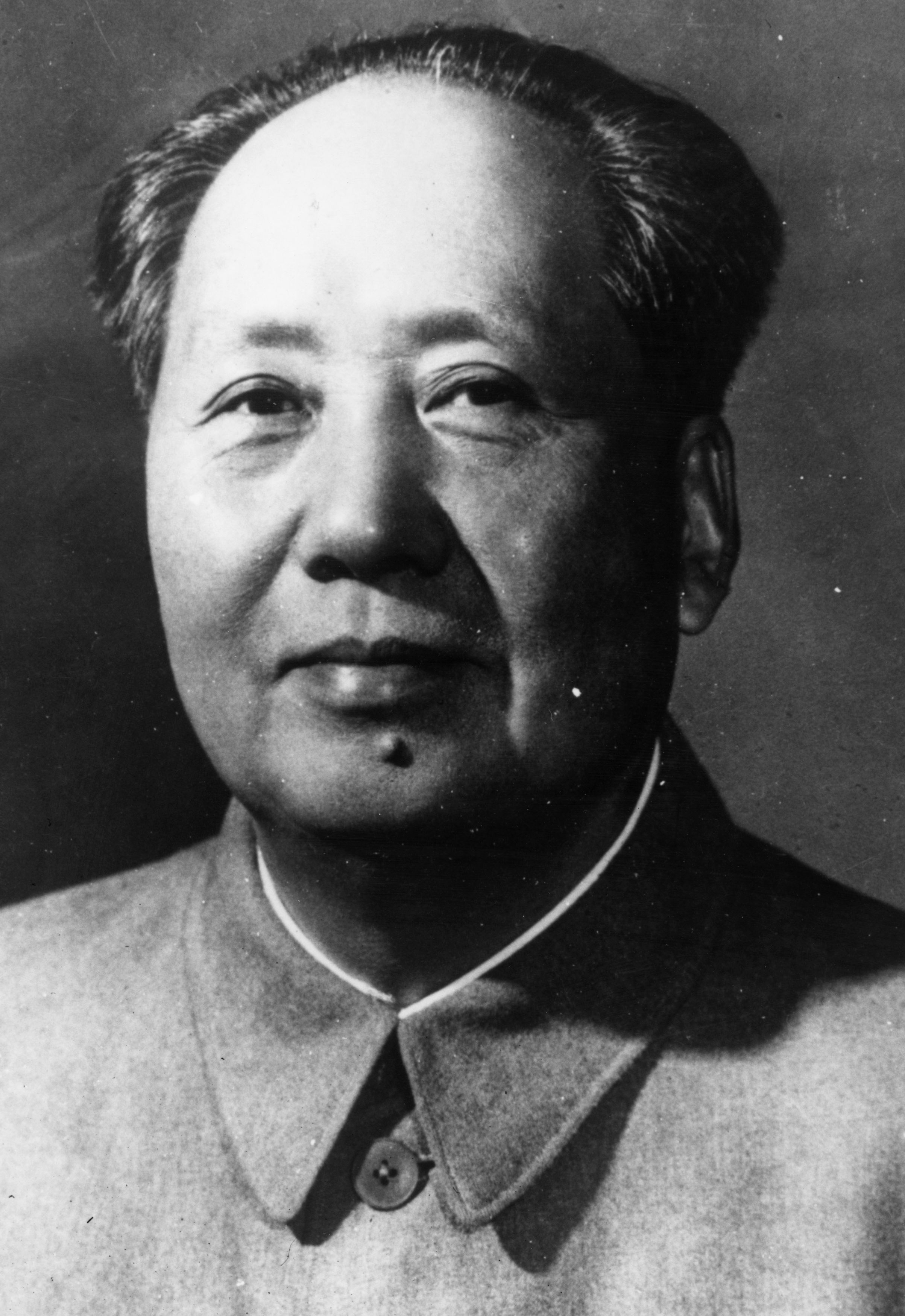Mao Zedong << mow zeh dawng >> (1893-1976), also spelled Mao Tse-tung, led the long struggle that made China a Communist nation in 1949. He then became China’s ruler and one of the world’s most powerful people. Mao controlled China’s artistic, intellectual, military, industrial, and agricultural planning and policies.

After the Communist victory, Mao’s face became familiar throughout the world. Pictures of him appeared everywhere in China. Young and old learned his slogans and studied his writings. His writings, particularly on guerrilla warfare and the role of peasants in Communist revolutions, were influential outside China. Mao also wrote poetry.
His life.
Mao was born to a peasant family in Shaoshan, a village in Hunan Province, on Dec. 26, 1893. He was still a student when the revolution of 1911-1912 overthrew the Manchu government and made China a republic. While he was employed briefly as a library worker at the National Peking University in 1918, Mao became attracted to the ideas of Communism. In 1921, Mao and 11 other people founded the Chinese Communist Party in Shanghai.
The Communists joined forces with Sun Yat-sen’s Kuomintang (Nationalist Party) in the effort to unite China. But distrust between the Communists and Chiang Kai-shek, who became Nationalist leader after Sun’s death in 1925, soon led to warfare between the two groups. Mao and other Communist leaders led small bands to Jiangxi province in 1928. By 1931, that province had become Chiang’s chief target. He began a series of “extermination campaigns” that nearly wiped out the Communists. From 1934 to 1935, Mao led the Communists to Shaanxi (Shensi) province, in what is called the Long March. The 6,000-mile (9,700-kilometer) march lasted over a year and welded the survivors into a tightly-knit group under Mao’s leadership.
Japan had invaded Manchuria in 1931, and launched full-scale war against China in 1937. The Communists and Nationalists joined in an uneasy alliance until World War II ended in 1945. As the Nationalist armies were driven inland during the war, Mao organized guerrilla warfare to spread Communism. By 1945, the Communists controlled areas populated by nearly 100 million Chinese. In 1946, fighting between Communists and Nationalists began in Manchuria. Communists gained control of China by October 1949, and Nationalists withdrew to Taiwan.
His leadership.
Mao formed the Chinese into a tightly controlled society more quickly than most observers thought possible. After taking power, he made an alliance with the Soviets, who helped strengthen the Chinese army when Chinese forces aided North Korea during the Korean War (1950-1953). After the war, Mao began programs to expand agricultural and industrial production. A crash program called the Great Leap Forward began in 1958, but failed. In the 1960’s, a split developed between China and the Soviet Union. Mao ordered nuclear research that led to Chinese nuclear explosions in the 1960’s.
In 1959, Mao gave up his title of chairman of the People’s Republic. But he kept control of the country and of the Communist Party. By the 1960’s, disputes between China and the Soviet Union had grown into a struggle for leadership of the Communist world. Mao considered himself the true interpreter of the principles of Communism. He believed that poor nations would inevitably revolt against richer nations. He also accused Soviet Communists of being soft toward the United States.
In the mid-1960’s, China suffered a series of diplomatic defeats. To maintain revolutionary enthusiasm, Mao campaigned against so-called revisionists, who favored economic changes. In the early 1970’s, China improved relations with the United States and other Western nations. Mao died on Sept. 9, 1976, after a long illness.
After Mao’s death, Chinese leaders reversed many of his policies and ended the emphasis on his personality. They looked to Japan, the United States, and European countries for help in modernizing China’s industry, agriculture, science, and armed forces. These goals were called the Four Modernizations.
